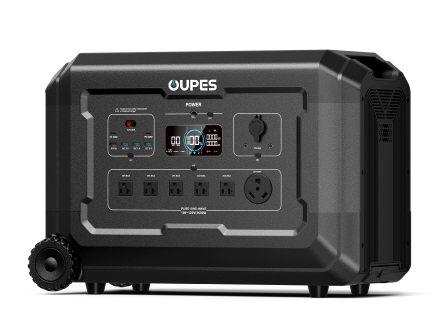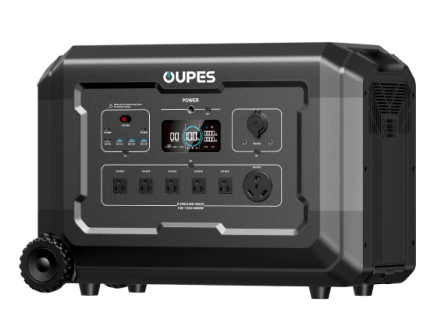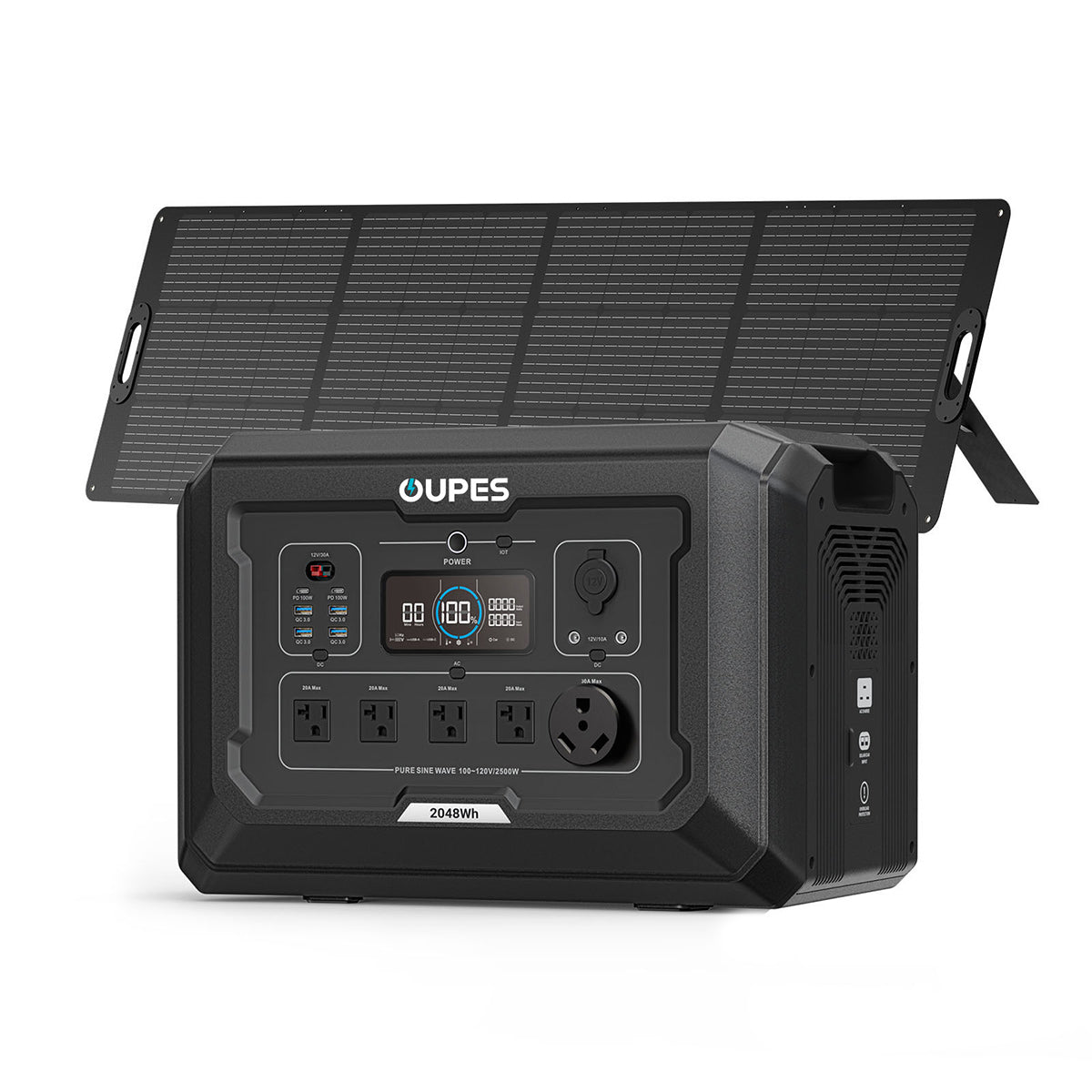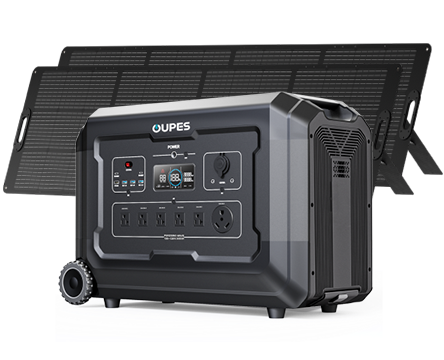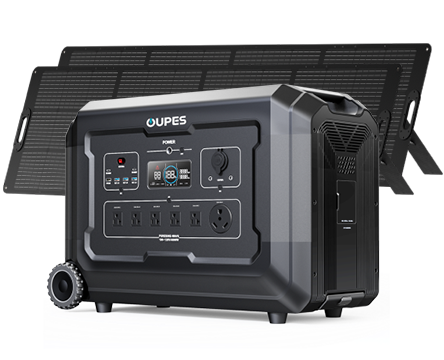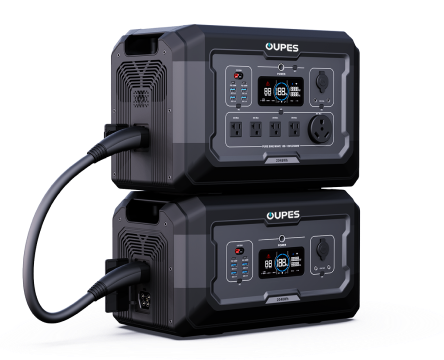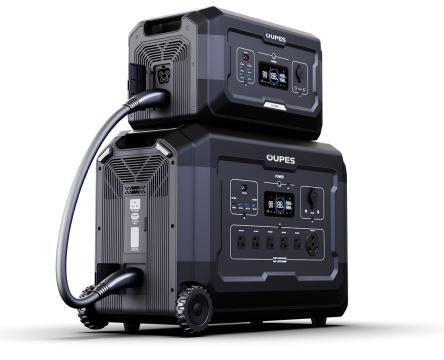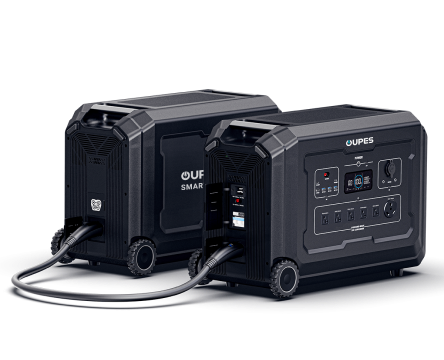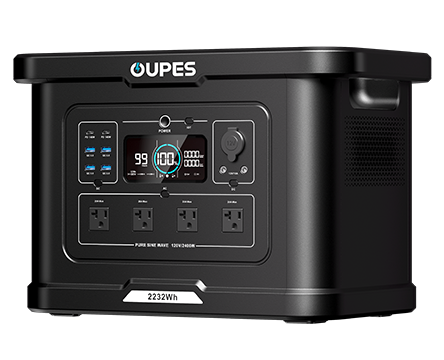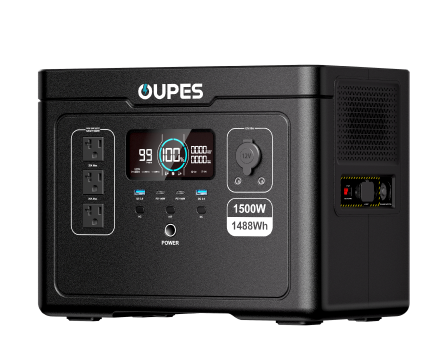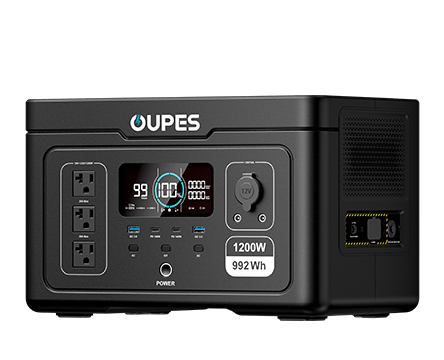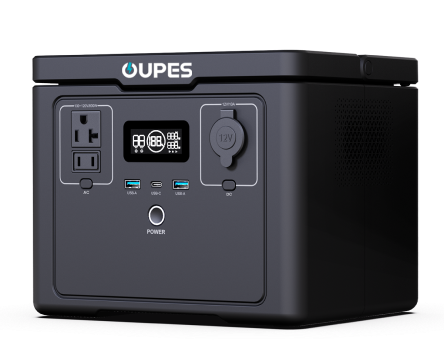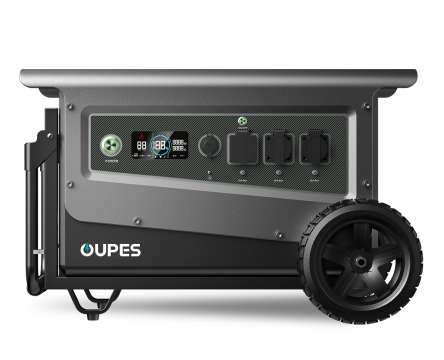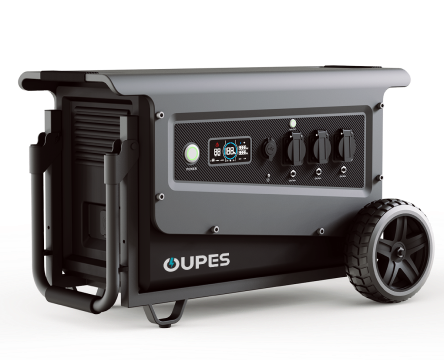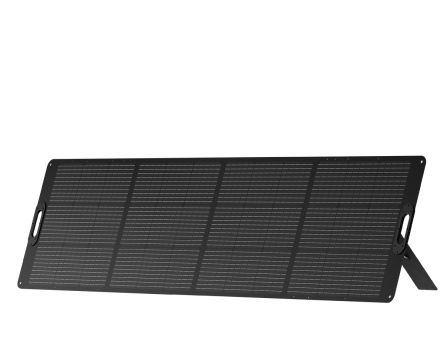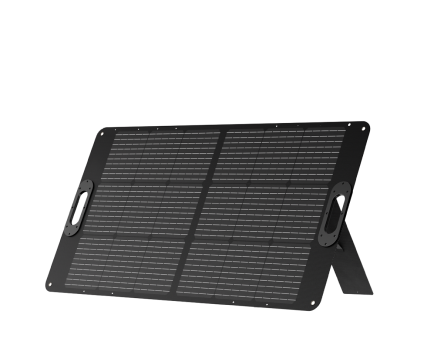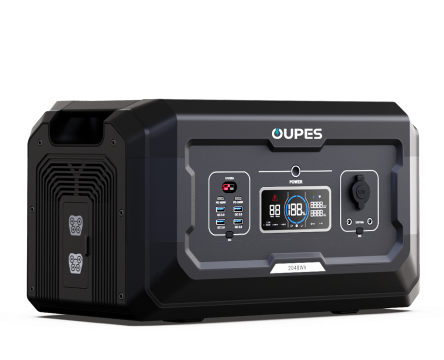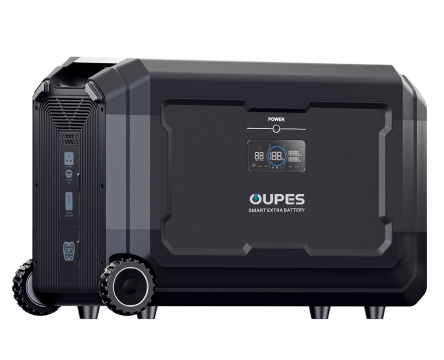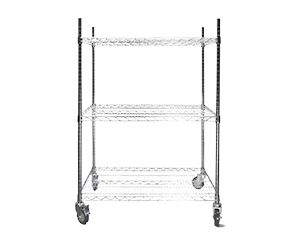
Within the elegant casing of a modern portable solar power generator lies a remarkable orchestration of nature and technology—a self-contained ecosystem designed to capture the sun's ephemeral energy and transform it into tangible, usable power. It represents more than mere convenience; it embodies a sophisticated yet accessible method for achieving energy independence, whether amidst the tranquility of nature or within the familiar confines of home during unexpected grid failures. How does this transformation occur? How is diffuse sunlight concentrated, stored, and made ready to power the devices that underpin our connected lives? The process, while rooted in complex physics and engineering principles, unfolds through a series of logical, interconnected stages, seamlessly integrated within devices like those meticulously crafted by OUPES.
Understanding this operational flow demystifies the technology, revealing the intricate yet reliable mechanisms at play. From the initial absorption of photons to the final delivery of conditioned electricity through versatile output ports, each component performs a vital role in a cohesive energy conversion chain. This journey from sunlight to socket power encapsulates a commitment to harnessing renewable resources efficiently and dependably, offering a glimpse into the future of personal energy management—a future OUPES actively helps to shape.
Capturing Sunlight: The Photovoltaic Genesis
The entire process commences with the silent, wondrous interaction between sunlight and photovoltaic (PV) cells, typically arranged in portable solar panels designed for optimal exposure and transportability. This initial stage, the photovoltaic genesis, relies on the fundamental properties of semiconductor materials, often highly purified silicon. When incident photons—particles of light energy emanating from the sun—strike the surface of these specially treated cells, their energy is sufficient to dislodge electrons from their atomic bonds within the semiconductor lattice. This liberation of electrons, spurred by light, creates an electrical potential, initiating a flow of direct current (DC) electricity. It is nature's alchemy, turning light into electrical potential. The volume of this DC current is contingent upon several dynamic factors: the intensity of the solar irradiance, the angle at which sunlight strikes the panel's surface (perpendicular being optimal), ambient temperature (as excessive heat can slightly impede efficiency), and, naturally, the inherent quality and surface area of the PV cells themselves. These panels, whether foldable arrays designed for portability or more rigid structures, serve as the crucial first interface, the conduits through which solar energy embarks on its journey toward becoming stored, usable power within the generator system.
Orchestrating the Flow: The Charge Controller's Crucial Role
The raw DC electricity harvested by the solar panels, however, requires intelligent management before it can safely replenish the generator's internal battery. Enter the charge controller: not merely a simple valve, but an sophisticated electronic conductor orchestrating the delicate process of energy transfer. Modern, high-efficiency units, like those integrated within OUPES power stations, predominantly employ Maximum Power Point Tracking (MPPT) technology. This represents a significant advancement over older methods. Why is MPPT paramount? Because solar panel output fluctuates constantly with changing sunlight intensity and temperature. An MPPT controller continuously analyzes the panel's output and dynamically adjusts its own electrical operating point (voltage and current) to precisely match the panel’s maximum power point under those specific conditions. This intelligent tracking ensures the extraction of significantly more energy—up to 30% more in some scenarios—compared to simpler PWM controllers, especially during suboptimal conditions like partial cloud cover or lower light angles. It maximizes the harvest. Beyond optimization, the charge controller performs critical protective functions. It acts as a vigilant guardian for the battery, preventing the detrimental effects of overcharging, which can shorten lifespan and pose safety risks. Conversely, it also often prevents excessive deep discharge by managing the power drawn by connected devices, further preserving the battery's health and longevity. This meticulous regulation is vital for ensuring both efficient energy capture and the enduring reliability of the entire system.
Storing the Potential: The Battery Reservoir (Focus on LiFePO4)
At the very core of the portable solar generator resides the battery—the steadfast repository where the harvested solar energy is diligently stored, awaiting deployment. This electrochemical heart dictates the unit's energy capacity (measured in Watt-hours, Wh) and significantly influences its safety and lifespan. OUPES, prioritizing longevity and user security, utilizes advanced Lithium Iron Phosphate (LiFePO4) battery chemistry. This specific formulation stands apart. LiFePO4 cells possess exceptional thermal and chemical stability, rendering them inherently safer and far less prone to the thermal runaway issues that can affect other lithium-ion types. Safety is non-negotiable. Perhaps even more compelling is their extraordinary endurance; LiFePO4 batteries are capable of undergoing thousands of charge-discharge cycles (often 3,500 or more) while retaining a high percentage of their original capacity. This signifies an electrochemical marathon, promising years upon years of consistent performance, starkly contrasting with the limited cycle life of many alternatives. It translates directly to superior long-term value and reliability. Protecting this vital energy reserve is the integrated Battery Management System (BMS). This intricate electronic brain constantly monitors individual cell voltages, temperature, and current flow. It actively balances cells during charging, prevents over-voltage and under-voltage conditions, guards against short circuits, and manages thermal thresholds, ensuring the LiFePO4 battery operates optimally and safely throughout its remarkably long life.
Delivering Usable Power: Inversion and Output
Stored energy, however potent, must be transformed into a format compatible with the myriad devices we rely upon daily. The battery stores energy as Direct Current (DC), but most household appliances and many electronics operate on Alternating Current (AC). This crucial conversion is the task of the inverter, an essential component seamlessly integrated within the power station. The inverter takes the low-voltage DC power from the battery and electronically transforms it into standard household AC voltage (e.g., 110-120V or 220-240V, depending on the region). Critically, high-quality generators, including those from OUPES, employ **Pure Sine Wave** inverters. This technology produces an AC waveform that is smooth and consistent, virtually identical to the clean power supplied by the utility grid. Why does this matter? Because sensitive electronics—laptops, televisions, medical equipment, modern appliances with microprocessors—are designed for this pure waveform. Using power from a lesser, modified sine wave inverter can cause malfunctions, generate excess heat, introduce noise, or even inflict permanent damage. Pure Sine Wave output ensures compatibility, safety, and optimal performance for all your devices. The culmination of this energy journey occurs at the output panel, where the generator provides a versatile array of ports—standard AC outlets, various USB types (including high-speed USB-A QC and powerful USB-C Power Delivery), and often 12V DC sockets—offering flexible connection points to channel this refined, reliable power exactly where it's needed. OUPES meticulously integrates these capture, regulation, storage, conversion, and delivery systems into a cohesive, user-friendly unit, making sophisticated energy technology accessible and dependable.
Thus, the operation of a portable solar power generator unfolds as an elegant, self-contained energy cycle: capturing fugitive sunlight via photovoltaic panels, intelligently regulating its flow through an advanced charge controller, securely storing this potential within a durable and safe LiFePO4 battery reservoir managed by a vigilant BMS, converting the stored DC energy into clean, stable AC power via a pure sine wave inverter, and finally, delivering this usable electricity through a suite of versatile output ports. It is a microcosm of sustainable energy management, meticulously engineered for portability and reliability.
Understanding this intricate yet harmonious process demystifies the device, revealing the thoughtful engineering that transforms a simple sunbeam into the power that fuels communication, illuminates darkness, preserves sustenance, and enables activity far removed from traditional power sources. It highlights the reliability inherent in well-designed systems, such as those offered by OUPES, which leverage advanced technologies like LiFePO4 and MPPT to provide dependable, clean energy solutions tailored for modern life, empowering users with energy freedom wherever they may roam or whenever the grid may fail.


